by Brian Scott Pauls
Dear Brian,
It’s me.
I mean, it’s you.
I mean, it’s you, from five years ago, writing to remind you of some important details you may have forgotten.
Remember back at the very end of 2022, when Facebook fed you up an advertisement for a University of Chicago Graham School course called “The History of Science Fiction”? You can’t have forgotten! It was taught by Hugo-award winning science fiction author Jo Walton, and Ada Palmer, who wrote the Terra Ignota series. I know you remember Terra Ignota! You read it in 2022 and spent most of the year telling anyone who would listen that it’s “an achievement on par with Dune!” You weren’t going to pass up a chance to take a science fiction class taught by the author.
Well, at the end of the course, Ada asked you to write a letter to yourself in five years, to “…discuss what you feel are the most valuable things you learned…” That’s what this is, right here. You see, I’m still back here in 2023, but you’ve made it to March of 2028. Congratulations! Here, roughly in the order in which they were covered in the course, are the top 10 things you learned in Ada’s and Jo’s class:
1. The science fiction “toolkit”
Because you’ve been reading science fiction since elementary school, you’ve developed what Ada calls a “toolkit” for understanding and enjoying an sf short story or novel. Not everyone has this toolkit, just like you’ve never developed the toolkit for understanding and enjoying romances or mysteries (BORING!) So keep this in mind when you get frustrated with your wife or eldest daughter for not enjoying what you read and write (but keep working on the four-year-old; she’ll be nine by the time you get this; there’s hope for her yet…)
2. The “project of science fiction”
Back in the 20s and 30s (that’s the 1920s and 1930s for anyone reading this letter sufficiently far down the timeline), Hugo Gernsback and John W. Campbell, Jr. weren’t just trying to make a buck in the pulp markets—they really believed in the new genre originally called “scientifiction”, but which you know as “science fiction”. Not only did they believe in it, they had a plan—what Jo calls “the project of science fiction...an agenda of trying to shape the future.” She further describes this agenda as “…educating people to live in the future, and to have ideas about the future…” Having lived (so far) through the COVID-19 pandemic, I hope the America of 2028 is doing much better at “…educating people to live in the future…” than we’ve done up to this point.
3. Paperbacks were intended to be disposable
Remember all those paperback sf books (largely Heinlein—do you still have your battered copy of The Past Through Tomorrow?) you collected before ebooks saved you from lugging around even more boxes every time you move? Do you know why some of them are falling apart? Because they were meant to be thrown away! Not necessarily by the readers, but definitely by bookstores when they couldn’t sell them. This is why shops like The Bookshelf in McPherson, Kansas would tear the covers off unsold paperbacks. They were designed to be cheap, so the publisher could reimburse the bookseller without getting them back. As a side note, this was also when the waste we generated was filling up landfills, clogging oceans, and heating the planet. How’s that worked out for you?
4. “Kamishibai” is the predecessor of both manga and anime
Kamishibai was “…a form of Japanese street theater and storytelling that was popular during the Great Depression of the 1930s and the post-war period in Japan until the advent of television during the mid-20th century.” It was “…performed by a [‘narrator’] who travelled to street corners with sets of illustrated boards that they placed in a miniature stage-like device and narrated the story by changing each image .” Kamishibai eventually led to manga (Japanese comic) and anime (Japanese animation).
5. Manga and anime is how Japanese sf was translated into English
Who cares about kamishibai? Who mixed up history with your sf? Since kamishibai led to manga and anime, it also led to Japanese sf spreading to the United States. During an era when the U.S. Was mostly a science fiction exporter, manga and anime (not short stories and novels) represented the one significant stream of non-Anglophone sf moving in the other direction. This was important, because as a population which found themselves on the losing side of World War II, the Japanese drew different lessons from that conflict than we did. While Heinlein, Asimov, and Clark were writing colonial sf during the 50s, the Japanese were exploring what it meant to wake up one day and discover they were some of history’s bad guys, and also the only nation to suffer an atomic attack.
6. Science fiction authors and readers share a “contract”
Every genre has its own contract between the author and the reader. In the case of science fiction, the contract includes the provision that the author will drop hints throughout the story. The reader will collect these “puzzle pieces” and try to fit them into a coherent picture of the world, characters, and plot. In return, the author guarantees everything will make sense in the end. If the author doesn’t follow through on this obligation, the readers tend to get…upset.
7. The writing in The Book of the New Sun is amazing
Remember when you used to avoid any fantasy that wasn’t The Lord of the Rings, The Chronicles of Narnia, or Earthsea? Including science fiction that was written to look and feel like fantasy? Well, the joke’s on you. For the course, you read an excerpt of Gene Wolfe’s Shadow of the Torturer, the first volume of The Book of the New Sun. The writing is exquisite—which you should have known, since you love one of Wolfe’s short stories. You really cheated yourself by refusing the read The Book of the New Sun when it came out, because on the surface it looked like fantasy. Now you’re quite excited to correct that mistake. Have you gotten around to it yet?
8. Dragonriders of Pern is very good, as well
As above, but for Anne McCaffrey’s Dragonriders of Pern series. I mean, you made it through L. Ron Hubbard’s execrable, ten volume Mission Earth series, because you liked Battlefield Earth. But you couldn’t manage to pick up even one volume of McCaffrey, just because it included dragons?!
9. Naomi Kritzer foreshadowed life during the COVID-19 pandemic in 2015’s “So Much Cooking”
And she nailed it! So if you’ve forgotten how to prepare for lockdown, give it a read.
10. Terra Ignota is written in layers, which only become apparent upon rereading
Jo told us that Ada meticulously outlines her books before writing them, which makes it possible for her to revise the outline based on what happens later. In the text, she can allude to elements we you won’t understand until you get further along in the book. You found out reading Terra Ignota may even be more fun than reading it the first time.
So that’s it, the top ten things you learned in “The History of Science Fiction.” I’ve sent you a copy of this letter in Gmail, scheduled to be delivered on March 2, 2028. So if you still haven’t finished The Book of the New Sun or Dragonriders of Pern, get to reading! I don’t want to have to email you again in 2033.
Temporally yours,
Brian
Please share your thoughts about this article by commenting online at thecosmiccodex.com!



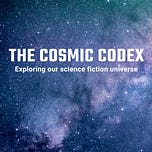

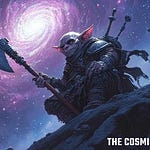
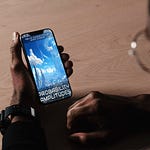


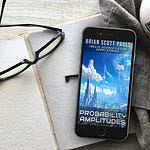
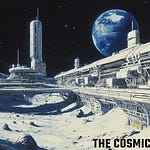

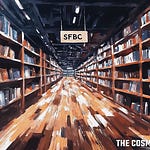
Share this post